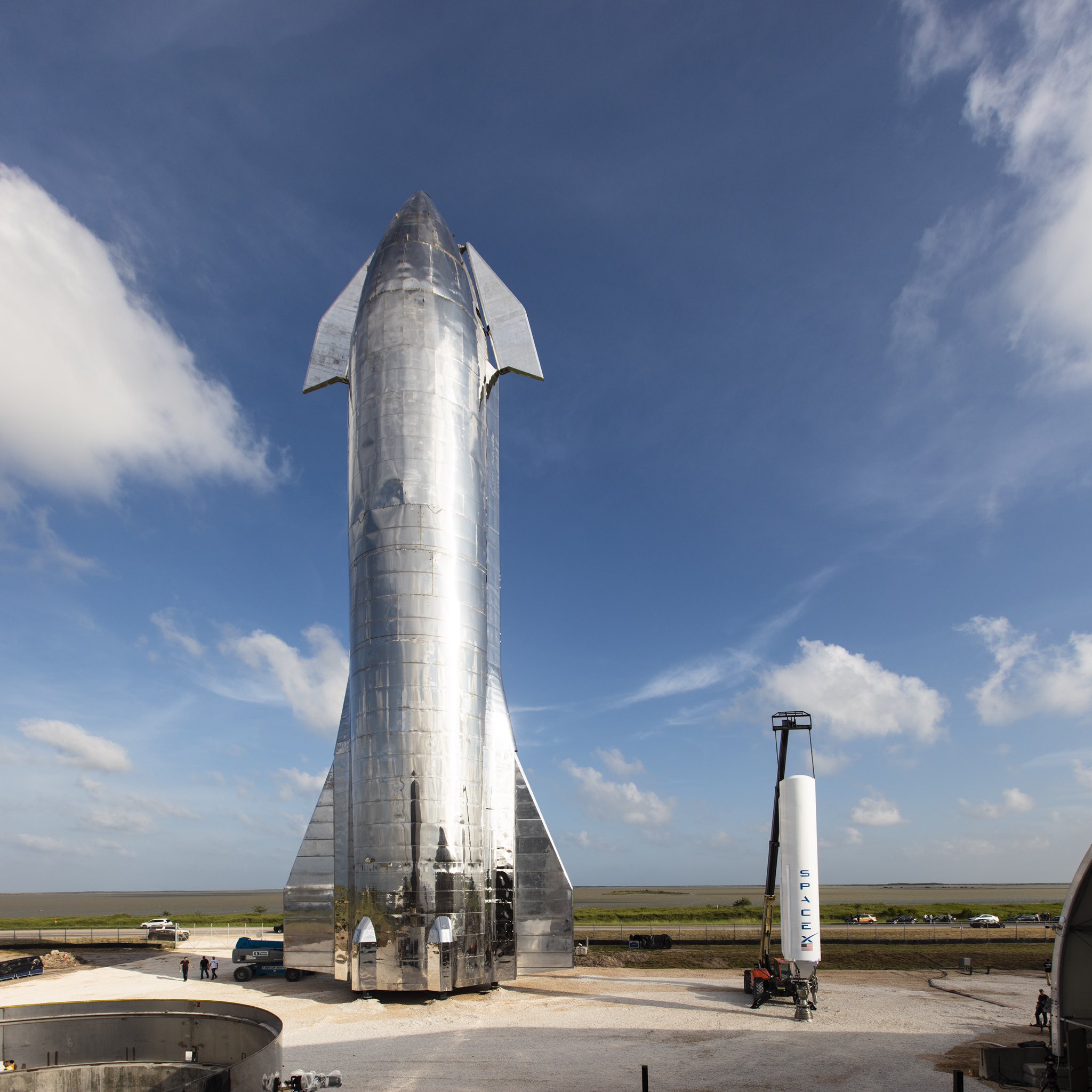Welders in a Texas swamp have built a starship. But don’t bet against SpaceX.
Starship is a prototype upper stage for a next-generation, fully reusable, two-stage-to-orbit launch vehicle designed to enable the human exploration of the solar system and the colonization of Mars. It’s made from stainless steel. (A little carbon converts iron to hard steel; a little chromium converts steel to corrosion-resistant stainless steel.) At cryogenic temperatures, grade 301 stainless steel has higher strength-to-weight and strength-to-cost ratios than carbon fiber reinforced polymer, and it has a higher melting temperature.
Starship will dissipate orbital energy by entering a planetary atmosphere like a sky diver, belly first, its fore and aft fins rapidly moving to control its descent prior to a tail-first rocket-powered landing. Strong electric motors powered by Tesla batteries will flap the fins.
Starship is powered by next-generation Raptor engines, the first full-flow staged combustion rocket engines to fly. In these efficient closed cycle engines, no propellant is wasted: all the oxidizer (and some fuel) power the oxidizer turbopump and all the fuel (and some oxidizer) power the fuel turbopump, which together pump gaseous oxidizer and fuel into the combustion chamber to combust and thrust. The oxidizer is liquid oxygen; the fuel is liquid methane, the primary component of natural gas, which can be manufactured from the martian (or terrestrial) atmosphere.


Thanks, Mark! I enjoy reading your posts as well.